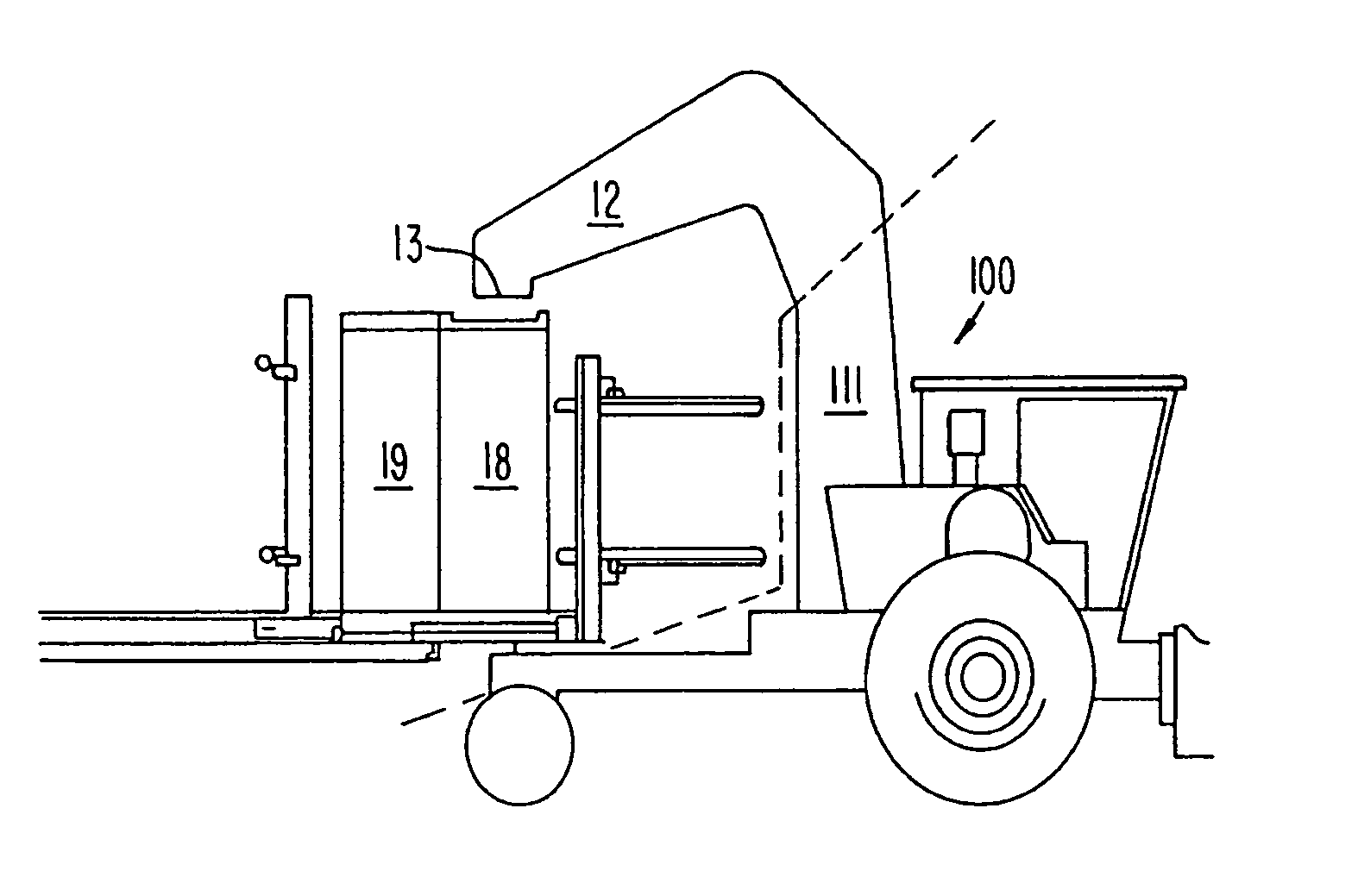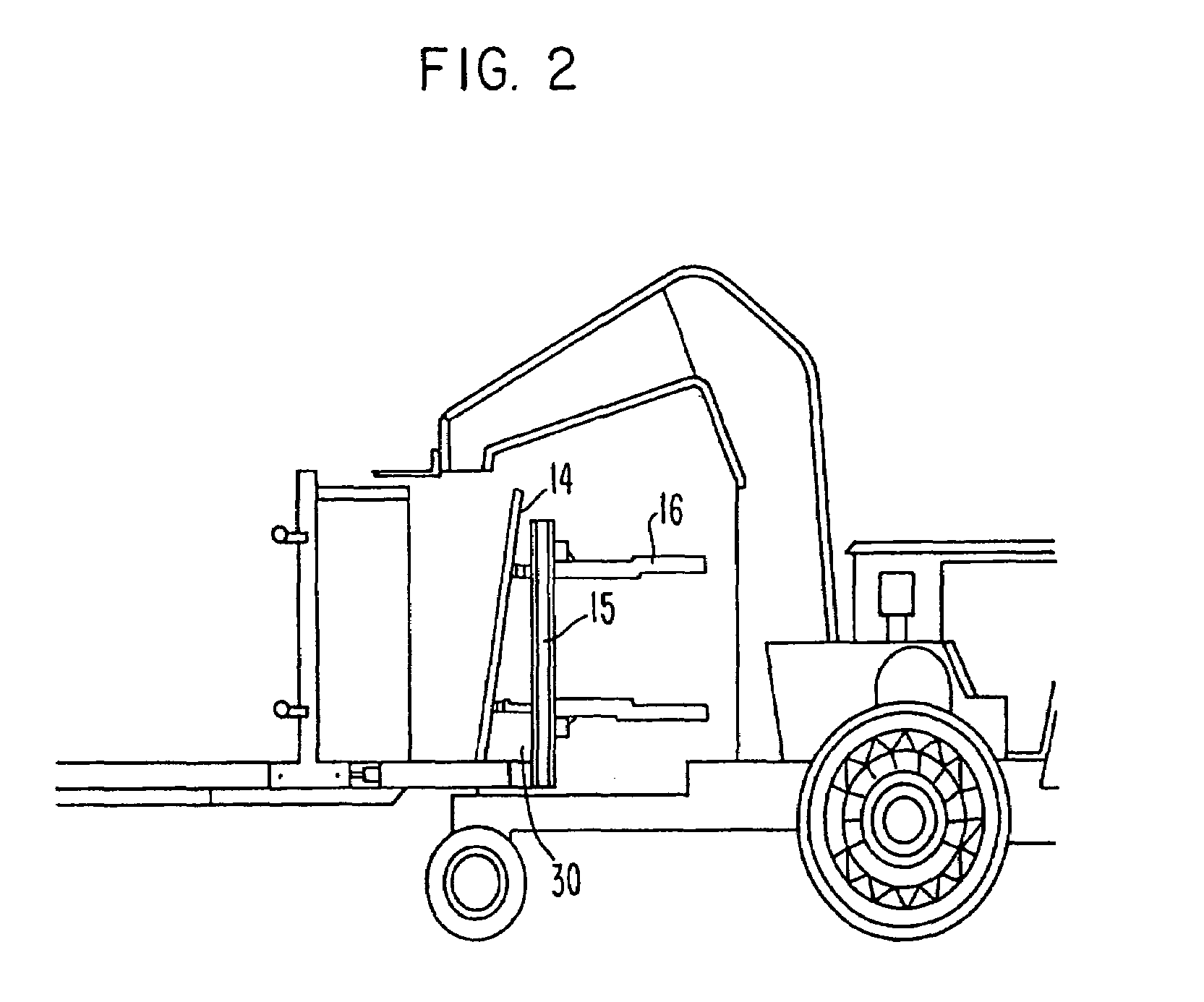Method and apparatus for forming modules from harvested crops
a technology of modules and harvesters, applied in the field of systems and methods for forming modules from harvested crops, can solve the problems of inability to quickly and efficiently dispose of loose harvested cotton from harvester enclosures, inability to quickly and efficiently store and handle loose cotton,
- Summary
- Abstract
- Description
- Claims
- Application Information
AI Technical Summary
Benefits of technology
Problems solved by technology
Method used
Image
Examples
Embodiment Construction
[0019]Preferred embodiments of the present invention include both an apparatus and method for modulating cotton.
[0020]FIG. 1 is a side view of an apparatus of the present invention used within a harvesting system to enhance the speed and efficiency with which cotton can be harvested. Preferred embodiments of the present invention include a holding chamber 12. The holding chamber 12 is attached to a harvester 100 in a manner that allows harvested material to be collected and then gravity fed through a door 13 at one end of the chamber 12. The door 13 is positioned above a compression chamber 18 that, in preferred embodiments, sits substantially centered on the pivot point of the wheeled main frame. In some embodiments, the compression chamber 18 is tapered to form a standard-sized module. Cotton is delivered to the holding chamber 12 above a compaction chamber 18 through the harvester's air delivery system 111. Cotton is temporarily held in the holding chamber 12 until the compressio...
PUM
 Login to View More
Login to View More Abstract
Description
Claims
Application Information
 Login to View More
Login to View More - R&D
- Intellectual Property
- Life Sciences
- Materials
- Tech Scout
- Unparalleled Data Quality
- Higher Quality Content
- 60% Fewer Hallucinations
Browse by: Latest US Patents, China's latest patents, Technical Efficacy Thesaurus, Application Domain, Technology Topic, Popular Technical Reports.
© 2025 PatSnap. All rights reserved.Legal|Privacy policy|Modern Slavery Act Transparency Statement|Sitemap|About US| Contact US: help@patsnap.com



